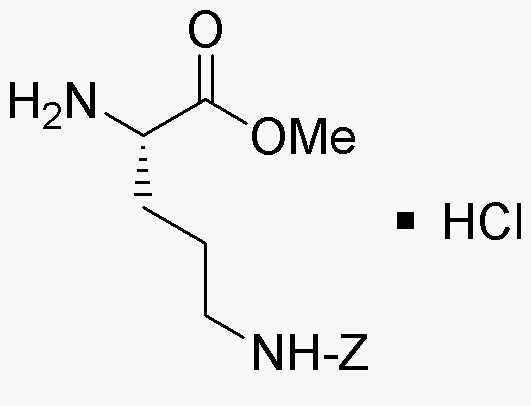Nd-Z-L-ornithine methyl ester hydrochloride is widely utilized in research focused on:
- Peptide Synthesis: This compound serves as an essential building block in the synthesis of peptides, particularly in the development of therapeutic agents targeting various diseases.
- Drug Development: It plays a crucial role in the pharmaceutical industry for creating new drugs, especially those aimed at metabolic disorders and cancer treatments.
- Biochemical Research: Researchers use it to study metabolic pathways and enzyme activity, providing insights into cellular functions and potential therapeutic targets.
- Cosmetic Formulations: The compound is also explored in the cosmetic industry for its potential benefits in skin care products, particularly for anti-aging formulations.
- Animal Nutrition: It is being investigated for its use in animal feed to enhance growth and improve overall health in livestock, contributing to more sustainable farming practices.
Informations générales
Propriétés
Sécurité et réglementation
Applications
Nd-Z-L-ornithine methyl ester hydrochloride is widely utilized in research focused on:
- Peptide Synthesis: This compound serves as an essential building block in the synthesis of peptides, particularly in the development of therapeutic agents targeting various diseases.
- Drug Development: It plays a crucial role in the pharmaceutical industry for creating new drugs, especially those aimed at metabolic disorders and cancer treatments.
- Biochemical Research: Researchers use it to study metabolic pathways and enzyme activity, providing insights into cellular functions and potential therapeutic targets.
- Cosmetic Formulations: The compound is also explored in the cosmetic industry for its potential benefits in skin care products, particularly for anti-aging formulations.
- Animal Nutrition: It is being investigated for its use in animal feed to enhance growth and improve overall health in livestock, contributing to more sustainable farming practices.
Documents
Fiches de données de sécurité (FDS)
La FDS fournit des informations de sécurité complètes sur la manipulation, le stockage et l’élimination du produit.
Spécifications du produit (PS)
Le PS fournit une description complète des propriétés du produit, notamment sa composition chimique, son état physique, sa pureté et les exigences de stockage. Il détaille également les plages de qualité acceptables et les applications prévues du produit.
Certificats d'analyse (COA)
Recherchez des certificats d'analyse (COA) en saisissant le numéro de lot du produit. Les numéros de lot et de lot se trouvent sur l'étiquette d'un produit, après les mots « Lot » ou « Lot de fabrication ».
Numéro de catalogue
Numéro de lot/série
Certificats d'origine (COO)
Ce certificat d'exploitation confirme le pays dans lequel le produit a été fabriqué, et détaille également les matériaux et composants utilisés et s'il est issu de sources naturelles, synthétiques ou autres sources spécifiques. Ce certificat peut être requis pour les douanes, le commerce et la conformité réglementaire.
Numéro de catalogue
Numéro de lot/série
Fiches de données de sécurité (FDS)
La FDS fournit des informations de sécurité complètes sur la manipulation, le stockage et l’élimination du produit.
DownloadSpécifications du produit (PS)
Le PS fournit une description complète des propriétés du produit, notamment sa composition chimique, son état physique, sa pureté et les exigences de stockage. Il détaille également les plages de qualité acceptables et les applications prévues du produit.
DownloadCertificats d'analyse (COA)
Recherchez des certificats d'analyse (COA) en saisissant le numéro de lot du produit. Les numéros de lot et de lot se trouvent sur l'étiquette d'un produit, après les mots « Lot » ou « Lot de fabrication ».
Numéro de catalogue
Numéro de lot/série
Certificats d'origine (COO)
Ce certificat d'exploitation confirme le pays dans lequel le produit a été fabriqué, et détaille également les matériaux et composants utilisés et s'il est issu de sources naturelles, synthétiques ou autres sources spécifiques. Ce certificat peut être requis pour les douanes, le commerce et la conformité réglementaire.


